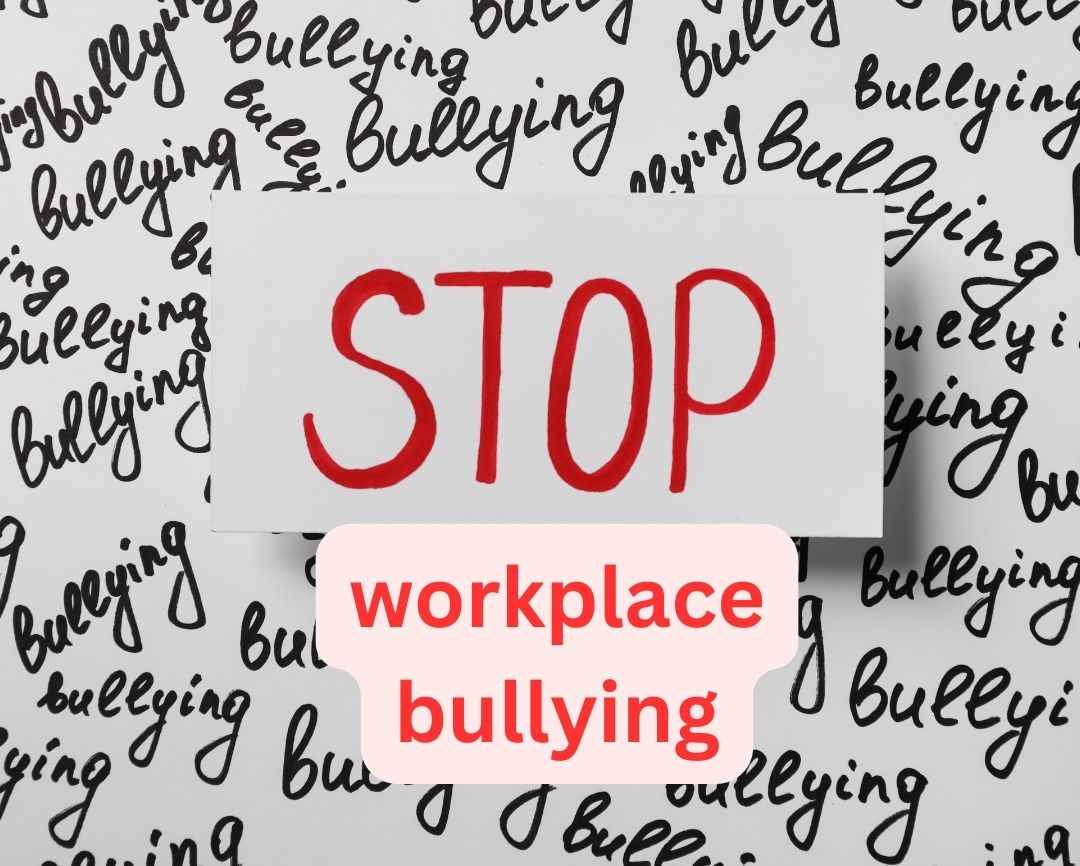
Navigating Workplace Bullying: Strategies for Self-Protection
Welcome to the intricate world of workplace dynamics, where the distinction between personal responsibility and toxic environments can often be elusive. Due to the hierarchical nature of many workplaces, with top-down structures and frequent performance assessments, employees may find themselves uncertain when faced with behaviors that feel painful and toxic. This uncertainty can lead to confusion and self-doubt, especially when it comes to identifying instances of bullying. The power differential between employees and employers can exacerbate this feeling of being gaslit, making it challenging to trust one’s own perceptions. In this delicate balance between self-assessment and workplace culture, it’s crucial to recognize the emotional toll that bullying behavior can take. Join us as we explore these complexities and shed light on the challenges faced by those navigating mistreatment in the workplace.
One Way to Know You are Bullied:
One way to gain clarity on whether you are being bullied at work, and that the issue is not related to your job performance, is to observe if the negative behavior is escalating over time. If you notice that disrespectful and hurtful experiences are increasing, there is a high likelihood that you are indeed being bullied. For instance, if you are receiving escalating negative feedback, experiencing more frequent nasty comments, being subjected to embarrassing setups, encountering slander or gossip directed at you, or being the target of jokes at your expense, these are all red flags indicating bullying. Additionally, if you find yourself consistently burdened with a workload that exceeds that of your colleagues in similar roles, it further confirms that you are being targeted unfairly. Trust your instincts and recognize these signs as evidence of workplace bullying.
In my office, clients who are clearly experiencing workplace bullying often express self-doubt, questioning what they might be doing wrong and how they can improve their performance. While self-reflection is valuable, it’s equally crucial to trust your instincts and acknowledge the reality of mistreatment. Ignoring or going along with bullying behavior will not lead to improvement. In fact, it only empowers the bully to escalate their actions, causing further harm. Workplace dynamics often resemble those of a classroom, where behavior is modeled from the top down. If leaders or those in positions of authority demonstrate disrespect, others may follow suit, perpetuating a toxic environment. The tone is set by those in leadership positions, and their behavior influences the entire workplace culture.
Understanding Workplace Bullying:
Amy Cuddy, a renowned social psychologist and professor at Harvard Business School, has conducted extensive research on workplace dynamics, including the phenomenon of bullying. Her work sheds light on the dynamics of workplace bullying, revealing important insights into who is likely to engage in bullying behavior, who is most vulnerable to being bullied, and the role of bystanders in these situations.
According to Cuddy’s research, bullies often exhibit traits of narcissism, arrogance, and a need for dominance. Contrary to common misconceptions, bullies may target individuals not because they are performing poorly, but because they are excelling in their roles and pose a threat to the bully’s perceived status or authority. In some cases, bullied employees may be overloaded with responsibilities on purpose, leading to evidence of poor performance as a result of the undue stress and pressure imposed upon them.
On the other hand, those most susceptible to being bullied are often individuals who display traits of kindness, empathy, and conscientiousness. These individuals may be perceived as easy targets by bullies, who exploit their perceived vulnerabilities for their own gain.
In addition to bullies and victims, there are also bystanders who witness acts of bullying in the workplace. Bystanders may feel conflicted about intervening, fearing retaliation or social repercussions. However, their actions—or inaction—can have a significant impact on the outcome of bullying situations.
Strategies for Self-Protection:
In light of these insights, it’s essential to develop strategies to protect yourself from workplace bullying and mitigate its negative effects. Here are some proactive steps you can take:
Build Confidence and Assertiveness: Cultivate a strong sense of self-confidence and assertiveness to deter potential bullies. Stand tall, maintain eye contact, and assert your boundaries firmly but respectfully.
Establish Healthy Boundaries: Clearly communicate your boundaries and expectations to colleagues and superiors. Set limits on acceptable behavior and don’t hesitate to assert yourself if those boundaries are crossed.
Develop a Support Network: Surround yourself with supportive colleagues and mentors who can provide guidance and assistance if you encounter bullying behavior. Having a strong support network can bolster your resilience and confidence in challenging situations.
Document Incidents: Keep detailed records of any instances of bullying or harassment that you experience or witness. Document dates, times, and specific details of the behavior, as well as any communications related to the incidents.
Seek Professional Help: If you find yourself in a situation where you are being bullied, don’t hesitate to seek support from HR professionals, but do be careful with reaching out to HR as oftentimes these serve to collude with the bully boss to keep the status quo. Seek out qualified professional coach who understands the bully in the workplace dynamic. These professionals can provide guidance, advocacy, and resources to help you navigate the situation effectively.
The fear of losing one’s job and financial stability, coupled with the dread of having one’s reputation tarnished by a malignant narcissist, weighs heavily on the minds of employees facing workplace bullying. The paycheck serves as a lifeline for meeting basic needs and supporting oneself and loved ones, adding immense pressure to endure mistreatment in silence. Moreover, the threat of having one’s reputation smeared by a manipulative bully can instill deep-seated anxiety and distress, as it not only impacts professional standing but also personal well-being and self-worth. Such concerns underscore the complexity of navigating workplace dynamics in the face of bullying behavior, highlighting the urgent need for support and intervention to ensure the safety and dignity of all employees.
Witnessing the mistreatment of a school secretary by the administration staff was a deeply troubling experience. I observed how she was ostracized and made the subject of jokes, even during meetings where she was not present. It became evident that this mistreatment stemmed from the insecurity of one secretary who wielded influence with the principal and vice principal, leading to a toxic environment where bullying thrived. The involvement of HR only heightened the secretary’s fear of losing her job, ultimately resulting in her transfer to another school. It was disheartening to witness the same dynamic unfolding with others in the building, as they were overloaded with work and subjected to ridicule behind their backs. The situation underscored the damaging effects of workplace bullying and narcissistic behavior, leaving me with a profound sense of empathy for the secretary and a commitment to advocating for a healthier and more supportive work environment. In hindsight, I should have begun exploring other job opportunities, considering the dysfunctional nature of this workplace’s operations.
You deserve to thrive in a workplace that values and appreciates your contributions. As the saying goes, “Go where you are celebrated, not just tolerated.” It’s important to recognize that fitting into a toxic workplace often means compromising your integrity and self-respect. Instead, seek out environments where you can maintain both. You have so much more to offer this world than being stuck in a toxic environment with individuals who lack the ability to lead effectively and cultivate a positive workplace culture. If you find yourself facing bullying in the workplace, it’s okay to acknowledge that it may not be the right fit for you. Don’t hesitate to explore other opportunities where your talents and skills will be recognized and celebrated. Remember, your well-being and happiness should always be a priority, and it’s never too late to seek out a work environment where you can thrive and flourish.
Despite the confusion and self-doubt that workplace bullying can create, it’s important to remember that you are not alone. By understanding the dynamics of bullying behavior and implementing proactive strategies for self-protection, you can reclaim your confidence and assert your right to a safe and respectful work environment. Trust in your own instincts and seek support from trusted experienced professional coach to navigate the challenges you may face. Remember, you have the right to work in an environment free from harassment and intimidation, and we’re here to support you every step of the way.
- To reach out to George or Lesley for coaching support head over to the contact page. Click Here
- For further reading check out, “Unmasking Gaslighting in the Workplace.” Click Here
- For even further reading check out, “Coping with Toxic Anger.” Click Here





